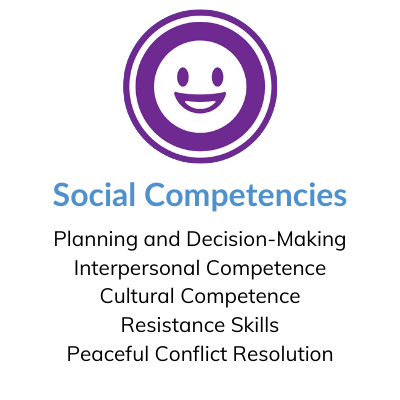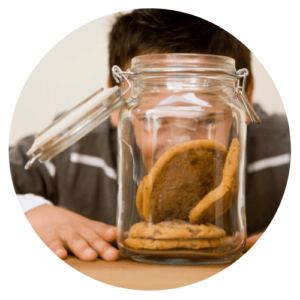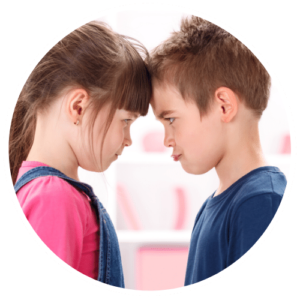Developmental Asset Categories
External Assets: Support | Empowerment | Boundaries & Expectations | Constructive Use of Time
Internal Assets: Commitment to Learning | Positive Values | Social Competencies | Positive Identity
External Assets: Support | Empowerment | Boundaries & Expectations | Constructive Use of Time
Internal Assets: Commitment to Learning | Positive Values | Social Competencies | Positive Identity
Learning social skills is much like learning to play the piano in terms of recognizing there are basic skills and that you need someone to teach you those skills. You need time to practice, guidance while you gain experience and feedback about it along the way. Social competency includes the skills and life perspectives that young people need to become healthy and competent adults. These skills are important on a daily basis, but are most crucial when young people face difficult times in life.
Research shows that the more personal skills young people have to interact with others and make decisions, the more likely they are to grow up healthy. The Search Institute has identified five key elements in the Social Capacity category that are crucial in helping young people: Planning and Decision-Making, Interpersonal Competence, Cultural Competence, Resistance Skills, and Peaceful Conflict Resolution. Two of these assets — planning and decision-making, and resilience — focus on personal decisions. The other three focus on healthy and interpersonal relationships.

Share your ideas for building these assets using @ShelteringWings and #SW40Assets.
Young people need the skills to interact effectively with others, to make difficult decisions and to cope with new situations.
 Decisions. Decisions.
Decisions. Decisions.Do you wear a blue or a red shirt? Do you try to belong or to create your own style? Do you go out to have fun with or find a way to say no thanks? Do you watch TV for a while or do your homework first? Young people make many decisions every day. Some are easy, some are difficult and others are just irritating. But all of these decisions are good practice for the future as they learn how to take more control over their lives. Best of all, when young people begin to connect the decisions they make today with their future (i.e., their goals, dreams, family and career), they will actually be better at planning for what they want to achieve.
Research shows that young people who learn to make good decisions and plan ahead do better in school, are less likely to drink alcohol, are less likely to smoke or use other drugs and are more capable of achieving what they want. Only about 29 percent of young people, ages 11–18, say they know how to plan ahead and make decisions, according to surveys conducted by the Search Institute.
Start small. Remember that when people learn to plan, they are more likely to achieve their long-term goals. Encourage young people to keep a daily to-do list and to check things off as they complete them. Allow them to make mistakes, and try not to rescue them from the consequences. Celebrate progress and achievements in planning and decision-making.
In your home and family: Talk to your child about how you make decisions. Has your way of making decisions changed over time? Invite your child to help you make decisions or plan a family event.
In your neighborhood and community: Invite local young people to help plan and organize a neighborhood party or event where everyone brings food to share.
In your school or youth program: Make two columns on the board. Write decisions on one column and future on the other. Ask each young person to name a decision he or she needs to make, then rank it according to how connected (1 = low, 5 = high) each decision is to a future goal or plan. Have a discussion.
 Learn to walk in other people’s shoes.
Learn to walk in other people’s shoes.At a glance, interpersonal capacity appears to be very simple. Most young people know how to make new friends. They may be upset when something bad happens to a friend and they notice when someone is acting differently. They know how to demonstrate sensitivity. But this is just the beginning. Empathy — one of the most important socio-emotional skills — does not come naturally to everyone. In fact, learning to walk in other people’s shoes can be confusing for many adults. After all, some people are easier to decipher and understand than others. Young people who practice the ability to be aware of their own needs and feelings and know how to express their feelings appropriately are more likely to succeed in dealing with the needs and feelings of others.
Research shows that young people who have empathy, sensitivity and the ability to make friends are more likely to grow up healthy and avoid risky behaviors such as violence, drinking alcohol and using drugs. About 45 percent of young people, ages 11–18, say they have empathy, sensitivity and the ability to be friendly, according to surveys conducted by the Search Institute.
Interpersonal competency involves not only young people’s abilities to make friends and develop enduring relationships, but also emotional capacity. That is the really confusing part. Parents and other caring adults should help young people learn to monitor their own expressions of feeling, decipher other people’s reactions and feelings (even if they are not expressed in words) and adjust interactions based on the situation in which the young person is at that moment. Remember that building interpersonal capacity is a lifelong process, so be patient. Every relationship in a young person’s life is an opportunity to learn and grow.
In your home and family: Invite your child’s friends over to your house. Spend time talking to them and getting to know them.
In your neighborhood and community: Get to know your neighbors — adults and youth — by hosting a dinner party, a gathering where everyone brings a dish to share, or a holiday gathering. Be sure to include young people in community social events as much as possible.
In your school or youth program: When new students enter your youth class or program mid-year, assign a young person to be his or her partner. Their job will orient the new person, introduce him or her to others and simply help the new person feel more comfortable in the new environment. This will make it easier for him or her to make new friends. The young person serving as the buddy will also develop greater interpersonal capacity.
 Teach young people to appreciate differences.
Teach young people to appreciate differences.Although most of us are attracted to people who are similar to ourselves, it is important to expose young people to a variety of cultures and people. In a perfect world, we would all know and feel comfortable with people from different cultural, racial or ethnic backgrounds. We would have positive relationships for other people who were not like us and would participate in a variety of cultural customs. Having cultural competency means that we learn to treat one another with respect, tolerance and equality. It means that we make an effort to learn about and understand people from another cultural, racial or ethnic background.
Research shows that young people who feel comfortable and have knowledge of people from different cultural, racial or ethnic backgrounds feel good about themselves, feel less alone, can solve problems well and perform better in school. About 43 percent of young people, ages 11–18, say they know and feel comfortable with people of different cultural, racial or ethnic backgrounds, according to surveys conducted by the Search Institute. Cultural competency develops youth into people who are firm, capable and interesting.
Think about what gives you comfort and pride in your family, ethnic group or cultural background. Then explore other cultures or countries. Chances are, you’ll find features you admire about those people, the art, the sayings, the food and the songs. Help young people learn how to mix together the best of these worlds and create a more understanding world by taking pride in their background while learning about the backgrounds of others.
In your home and family: Explain to your child how and why his or her name was chosen. Talk about any connection the name has to your family’s culture and roots — old or new.
In your neighborhood and community: Get to know people who are from a different country or who have a different cultural background than yours. Ask about their family traditions, celebrations and other unique aspects of their ancestry.
In your school or youth program: Sitting in a circle, ask students to talk about their family or ethnic backgrounds and their favorite celebrations, meals, music, stories and other things. Then ask them to complete this sentence: “If I could share one of these things, my gift to you would be. . . “
 The art of resistance and reasoning
The art of resistance and reasoningLearning to resist is one of the most important social skills we develop. This ability gives young people the confidence to say “no” to people or situations that make them feel uncomfortable. But that is not all. In addition to resistance, young people also need to know how to be certain. They need to know their voice will be heard — whether they say “no” or “yes.” With this skill in-hand, young people who confront difficult situations will make good decisions and take a firm stand on their beliefs.
Research shows that young people who can resist negative peer influence and dangerous situations are more likely to avoid risky behavior and focus on positive attitudes. About 41 percent of young people, ages 11–18, say they can resist negative peer influence and dangerous situations, according to surveys conducted by the Search Institute.
Teach young people the skill of resistance, but also teach them the values that support why he or she would take a firm stand on an issue. Having many conversations with a teenager about drug use, sex, safety and personal limits increases the chances that he or she will make a safe decision when, for example, they are invited to ride in a vehicle with a driver who has been drinking alcohol.
In your home and family: Model and give illustrations of resistance skills. Give your kids a variety of ways to say “no.” Afterward, talk to your child about their experience and what was easy and difficult about it. Focus not only on how to resist with certainty, but also on what to value and what to say “yes” to.
In your neighborhood and community: Offer a safety net to young people you know. Let them know they can call you if you feel pressured or tempted to do something unsafe or unhealthy.
In your school or youth program: Study the people in your world who have taken a stand for their values and have resisted what everyone else did (e.g., Rosa Parks and Gandhi). Discuss why they were able to do or what they did.
 Finding solutions together
Finding solutions togetherWhether it’s an argument between sisters about who should take out the trash or an argument between nations about natural resources, disagreements are part of being human. But no matter how small or large it is, each dispute can be resolved peacefully if both sides are willing to listen and commit. Encourage young people to talk things through — and truly listen to each other. The key is to speak and listen respectfully.
Research shows that young people who resolve conflicts peacefully perform better in school, have higher self-esteem and are less likely to use alcohol and other substances. About 40 percent of young people, ages 11–18, say they seek to resolve conflict without violence, according to surveys conducted by the Search Institute. It is normal for all of us to feel angry from time to time, but learning to maintain our temperament helps us to express our anger more effectively.
When you see two young people arguing, remind them to take a deep breath. Once they calm down, ask them to think about why they are angry before they resume talking. Being calm helps them focus on the problem at the front and not on attacking the other person. Suggest that they talk about the problems before the problems get too big. This can help everyone prevent things from expanding out of proportion.
In your home and family: Talk to your child about a conflict you had when you were young. Discuss how you handled the situation then and how you would deal with it now.
In your neighborhood and community: Be sure to set the example of resolving conflict peacefully in your own life. Remember, when you fight in public, whether in a store or on a bus, there is a good chance that young people are listening to you. What do you want them to hear?
In your school or youth program: When a conflict results between two young people at your school or in your program, help them through the following steps: 1. Ask each person to state what he or she wants without blaming the others; 2. Ask both to listen and try to understand each other; 3. Stay focused on the current conflict — don’t mention other conflicts; 4. Emphasize problem-solving creatively and with new solutions; 5. Negotiate until you reach a result where both sides win.
Tolerance, negotiation and commitment, sensitivity to the feelings and needs of others, and appreciation of one’s own culture and that of others are skills that we need to teach and lead by example. You can help young people learn these skills by: 1) Demonstrating the skill while the young person watches; 2) Doing the skill together; 3) Allowing the young person to do the skill alone while you watch; 4) Providing feedback along the way.
In your home and family: Allow your child to do things for him or herself, even if it is not the way you would do them. Allow your child to make mistakes and learn from them.
In your neighborhood and community: If there is disagreement in the neighborhood, set the example of negotiation and peacemaking skills to work toward a positive resolution.
In your school or youth program: Encourage young people to plan with the use of agendas and calendars. Help them learn and practice their planning and decision-making skills by engaging them in long-term projects. Teach them how to set short-term goals to keep the project moving forward to meet the deadline.